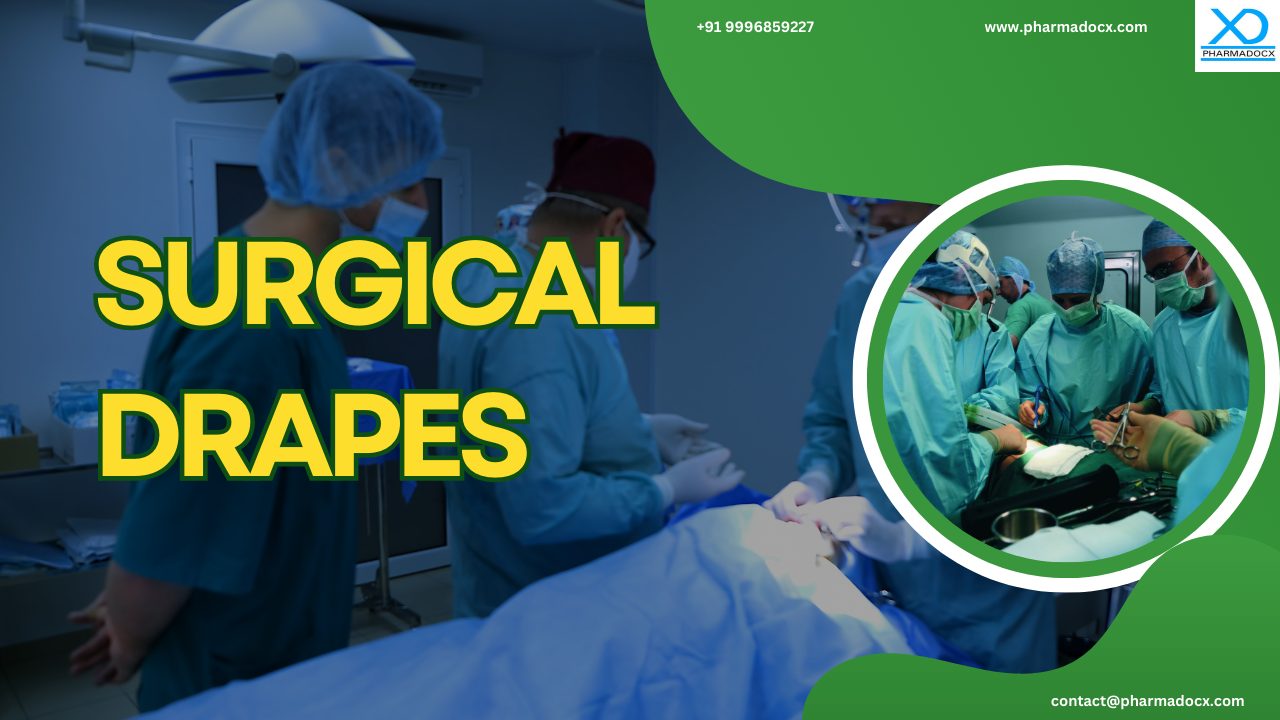Patients are highly susceptible to infections and infection related complications during surgery. This can have detrimental consequences. Surgical site infection or SSI has to be prevented for improved patient outcome and a successful surgery. Surgical drapes are a crucial medical device for prevention of SSI. In operation theatres, these drapes are used by the surgical team to limit the aseptic surgical area. They act as mechanical barriers covering the freshly-cut wound edges. Read on to find out more.
What is surgical site infection (SSI)?
During surgical procedures, there is a high chance of pathogen transmission leading to surgical site infection (SSI). It is a potentially devastating complication of surgical procedures. Patients undergoing surgeries are highly susceptible to complications caused by infections. Thus, surgical site infections can cause morbidity and even mortality. Furthermore, SSI can add to healthcare expenditures.
Surgical drapes are pivotal for preventing SSI
While performing surgeries, maintaining a sterile operating environment is vital to prevent infections. This is important to ensure patient safety and improve patient outcome. As per WHO guidelines and recommendations for prevention of SSI, surgical drapes play a crucial role in preventing SSI. Surgical drapes act as a barrier against external contamination sources. They are used to prevent contact with non-sterile surfaces. They are routinely used in operation theatres.
What are surgical drapes?
Surgical drapes, a medical device, are used to create a sterile field. It is a sterile sheet used to protect patients during surgery by preventing the spread of pathogens from non-sterile to sterile areas. This medical device is used to prevent complications caused by infection during surgery. Moreover, they can prevent penetration of liquids. They are available in various sizes and shapes. They are made using various materials, such as cotton and polyester. There are two categories of surgical drape: reusable and disposable.
Commercially available drapes maybe permeable or impermeable to liquids. Studies have highlighted that the material of the disposable/reusable drapes should ideally be impermeable to fluids. If the material is impermeable, it will also prevent the transmission of microorganisms. Permeable drapes can expose health care professionals to the released body fluids and also be a risk to patients.
Reusable vs disposable surgical drape
There are two major categories of drapes:
Reusable: These drapes are made of tightly-woven materials. The materials are blended with knitted cotton or polyester and maybe chemically treated. They are properly laundered after surgery and reused. Hence, the drape has to be durable and provide protection even after multiple cycles of treatment.
Disposable: These drapes are made ofnon-woven materials of synthetic or natural origin. They may be chemically treated. These are disposed and incinerated after use.
Advantages of disposable surgical drapes
Disposable surgical drapes are made of non-woven fabric. This fabric is breathable and lightweight. This reduces the risk of skin irritation or overheating during surgery. Being bonded together rather than woven, this fabric is strong and tear-resistant. These drapes provide various levels of barrier protection against microorganisms. Owing to the use of non-woven fabric for manufacturing disposable drapes, they are highly effective against spread of infections. Disposable drapes are used only once and disposed off, which might make them expensive. However, non-woven fabrics are not expensive and are easy to manufacture. Thus, the cost of disposable surgical drapes is low.

Types of drapes
- Common basic drapes: These drapes provide a physical barrier.
- Split drapes: These drapes are used to perform a two-part procedure.
- Specialty drapes: These drapes are designed for specific surgical procedures.
- Universal drapes: These drapes are versatile and can be used for various surgical procedures.
- Extremity drapes: These drapes are designed for surgical procedures to be performed on specific extremities.
- Fenestrated drapes: These drapes have been designed to allow access to a specific area while maintaining sterility.
- Incise drapes: These drapes provide a sterile barrier around the surgical site.
Additionally, laparotomy drapes and C-section drapes are also available.
Points to consider while choosing drapes
- Resistance to infection: This is the primary factor to consider while choosing drapes. The main goal of surgical drapes is to prevent complications caused by infection during surgery. The drape must act as an effective barrier against transmission of microorganisms.
- Durability: The drape has to be sturdy and durable. It should be able to withstand high-pressure operations. If the drape gets damaged or tears into small pieces during the operation, this will lead to serious complications.
- Breathability: The drapes have to be breathable to allow adequate air flow to protect the patient from skin irritation and overheating.
- Moisture management: Excessive moisture buildup will lead to skin irritation and infection. This will lead to serious complications and need to be avoided. The drapes should be able to effectively manage moisture to prevent potential infection.
Furthermore, drapes should be stored in a clean, hygienic, safe, and sterile environment. They are vital for the prevention of SSI and other surgery-related complications. Hence, not only the drapes themselves should be sterile but also should be packaged and stored in a sterile manner. Maintaining the hygiene and sterility is of utmost importance to have a safe and effective surgery.
Importance of surgical drapes
- They primarily act as a shield by considerably reducing the risk of SSI and other complications caused by SSI.
- Body fluids, such as blood and other secretions, ooze out during surgery. The drapes are usually designed to channel body fluids away from the surgical site. They effectively manage the fluids released while performing any surgery.
- The drape acts as a barrier protection between the patient and surgical team, thereby ensuring the safety of both.
- They create a sterile shield to ensure the surgical site remains completely free from any pathogens.
Thus, surgical drapes are a valuable medical device for ensuring patient safety. They have multiple roles to play to ensure improved patient outcome. In addition to maintaining a sterile surgical environment, they also protect the patient’s modesty by exposing only the necessary surgical area.
Manufacturing surgical drapes
The material for manufacturing the drape depends on the type of drape (reusable or disposable). Woven material blended with cotton or polyester is used for reusable ones. On the other hand, for disposable ones, non-woven materials, like latex or polyurethane, are used. Fabrics, such as polypropylene or polyethylene, are also used. Also, a layer of plastic is used to prevent easy transmission of liquids. Moreover, the material should be colour fast and resistant to stain. The material has to be cut and sewn together as required. The material is stuck using a special glue. Then, they are packaged in rolls or panels.
Drapes need to be adequately tested prior to sale
The primary aim of these drapes is to reduce infection and infection-related complications during surgery. To test their effectiveness, drapes undergo rigorous quality and durability assessments. Wear and tear assessment, microbial testing, and colour fastness evaluation are some of the tests performed. The ability of the drapes to create a protective barrier needs to be tested properly. Additionally, biocompatibility, inflammability, and sterility tests are performed. These tests demonstrating the drape’s effectiveness are key to ensuring patient safety and protecting patient health.
For manufacturing medical devices in India, CDSCO manufacturing license will be required. Are you planning to manufacture surgical drapes in India? Not sure of the applicable CDSCO regulatory guidelines. Simply call/Whatsapp on 9996859227 or email at [email protected] and we will help you with all your CDSCO regulatory requirements.





0 Comments